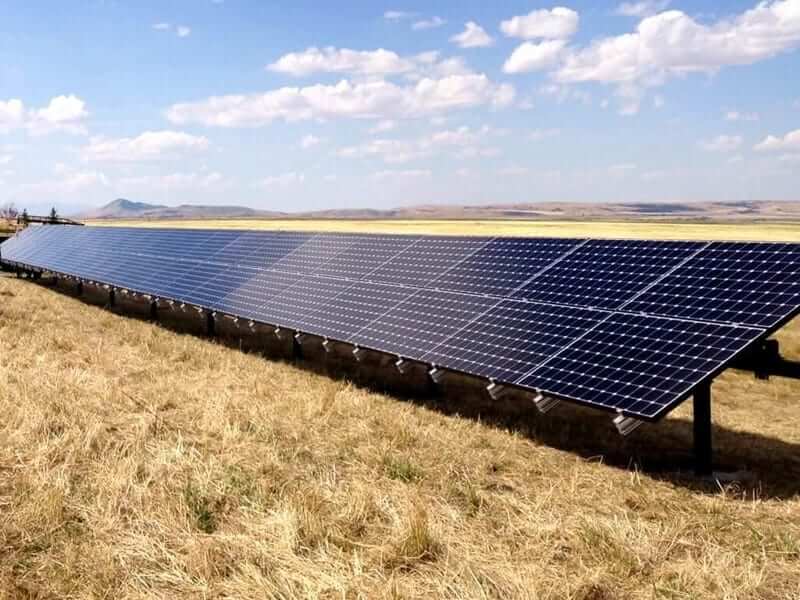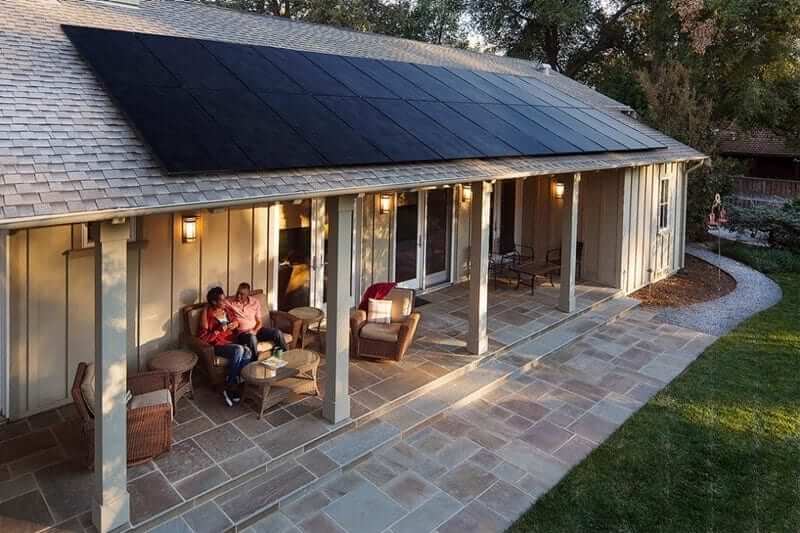The Truth About The Carbon Footprint Of Solar Panels
Solar energy is one of the first things we think of when considering “going green.” What could be more renewable than the sun? Abundant, pollution-free energy also has the means to dramatically reduce your electric bill.
Of course, from sunshine to electricity for your home or office, there is an intermediary step or two. We all pretty much know there’s no such thing as a free lunch. In order to harvest the sun’s energy for your electricity, you need solar panels. And those panels don’t just grow on a tree in a jungle and fly up onto your roof!
Yeah, we wish.
There’s a bit of industry involved in getting those photons to light up our modern lives. Obviously, considerable energy and raw materials are involved in the manufacturing of a solar panel. Ironically, it is often hydrocarbon-generated electricity – coal – that powers the factories where solar panels are produced. Ditto for all the components of a solar system. And the cars the employees drive to those factories and installation sites. And the computers used by all involved. Etcetera. You see, it ain’t easy being green. Said some famous frog.
But, fear not, solar-generated electricity is indeed a highly green form of energy compared to fossil fuel-based energy. Once installed, a solar panel makes pollution-free energy. (And, installed correctly, the solar system should not require repairs – which involve the use of more energy, making any item less green).
The better any product is manufactured – across its production chain (taking into account labor conditions) – the better it is likely to function. The more robust a system is, the greener it is.

BUILD STRONG SOLAR FROM THE BEGINNING
A solar PV system built with quality components and installed by a thoroughly trained and meticulous crew will deliver clean, reliable power for thirty or more years. As not all solar panels are created equal, neither are all solar companies.
Embodied energy is a term used for the energy consumed in the production of a given product. Assessing embodied energy is not an exact science of course – there is variability as to what factors to consider. It is generally accepted that a PV panel “pays” for its embodied energy in about two years. (Homepower, 2008)
NOT ALL PANELS ARE CREATED EQUAL
A PV panel’s degree of “green-ness” depends on 4 main factors:
- The production process involved in making it – from origin to final product
- How robustly the panel is made
- How well the solar system is installed
- The recycling of panel materials at the end of its life
PV panels range inefficiencies from about 14% to over 23%, with SunPower dominating the higher efficiency market.
Over 50% of panels on the market are made in China. While these panels are cheaper, the environmental cost of manufacturing is much higher than in other countries.
Note: In this post, it is crystalline silicon-based solar panels that are being considered. Thin-film solar panels have different production processes and raw materials.
HOW LONG DOES A SOLAR PANEL LAST?
The Solar Energy Industry Association (SEIA) claims that solar panels have a life expectancy of about 30 years. Quality panels will likely last much longer. Over its lifetime, a PV panel will produce many times more energy than was required for its production.
There has been a “rule” out there that panels degrade by 1% a year. That, however, is rather pessimistic, especially for higher quality panels. A study by NREL (National Renewable Energy Laboratory) concluded that “a panel manufactured today should produce 92% of its original power after 20 years, quite a bit higher than the 80% estimated by the 1% rule.”
CAN A SOLAR PANEL BE RECYCLED?
Glass makes up 80% of a solar panel’s composition so already the majority of a panel is recyclable. Additionally, the metals (mainly aluminum and copper) and most semiconductor materials can be recycled. It is the manufacturer’s responsibility to produce a solar panel that can easily be processed at the end of its life.
At this time most solar installed panels are still viable and performing well so the issue of recycling has only just begun being addressed. Europe has the PV Cycle program for recycling PV panels but here in the U.S., we do not yet have a well-organized program. SEIA is currently addressing this issue.
When it comes to true green, SunPower rules.
The one and only PV panel out there to have achieved “Cradle to Cradle” certification for sustainability is SunPower (for their E and X-series panels). Essentially this means that the Cradle to Cradle Products Innovation Institute evaluated both the impact on the natural environment and labor conditions in the manufacturing of these panels – and the SunPower company passed muster and can thus claim to be closer than any other panel to being sustainably manufactured.
BE THE CHANGE YOU WANT TO SEE IN THE WORLD
Most of us realize the necessity of weaning ourselves off our wasteful consumerist ways. A big step in that direction is taking into account how the products we use are made – the environmental impact, the labor conditions, and the overall quality of a given product.

